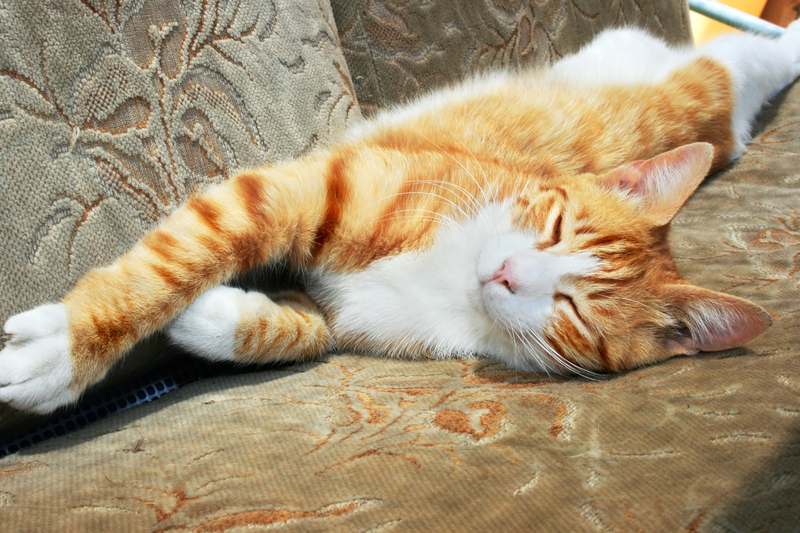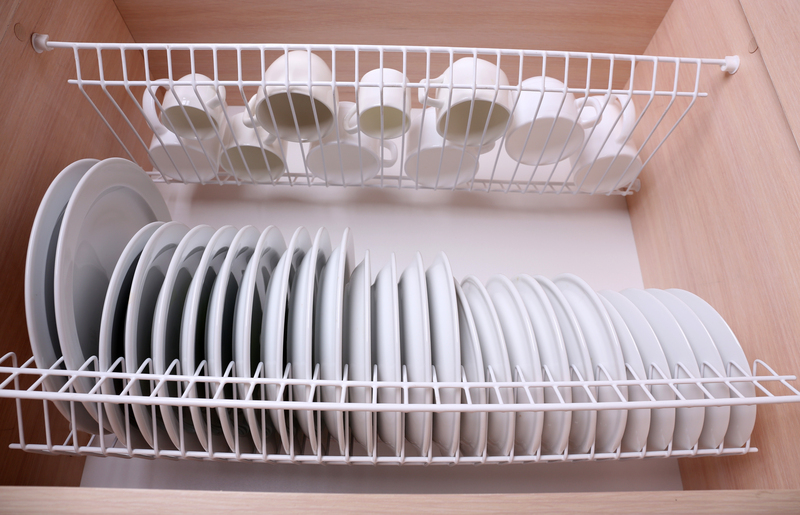Get Rid of Stovetop Burnt-on Residue Using Simple Techniques
Posted on 26/05/2025
Get Rid of Stovetop Burnt-on Residue Using Simple Techniques
If you're tired of looking at burnt-on residue on your stovetop and wondering how to finally achieve that sparkling clean look, you're not alone. Anyone who cooks knows that a stovetop can become grimy quickly, especially when spills, overflows, and burnt-on foods create unsightly messes. But don't worry – with the right approach, removing burnt-on residue from your stovetop is easier than you think! This comprehensive guide details simple techniques and handy tips to bring your stovetop back to its former glory.

Understanding the Different Types of Stovetops
Before diving into the best ways to clean stovetop burnt-on residue, it's critical to identify the type of stovetop you have. Each requires a slightly different approach for optimal results. Here's a quick rundown:
- Gas Stovetops: Feature burner grates and removable burner caps. Spills can be especially stubborn when they cook onto the grates or metal surfaces.
- Electric Coil Stovetops: Have exposed coil burners that can accumulate grime, and drip pans underneath catch sauces or overflows, often resulting in caked-on debris.
- Glass or Ceramic Stovetops: Popular for their sleek design, but are prone to visible scorch marks and scratches. Require gentle, non-abrasive cleaning.
- Induction Stovetops: Smooth glass surface like ceramic tops, sensitive to abrasive cleaners or harsh scrubbing.
Why Burnt-on Residue is So Hard to Remove
Burnt-on messes are a common kitchen headache because the intense heat from cooking bonds sugars, fats, and spilled sauces to the stovetop's surface. Over time, these stubborn residues become harder to clean, and if not tackled correctly, they can leave behind permanent stains or even damage your stovetop.
Essential Supplies for Stovetop Cleaning
To effectively get rid of stovetop burnt-on residue using simple techniques, having the right tools and products at hand is essential. Here is a checklist:
- Baking soda
- White vinegar
- Lemon juice
- Dish soap
- A non-abrasive scrub sponge or microfiber cloth
- Plastic or silicone spatula (for scraping)
- Razor blade scraper (for glass stovetops - optional)
- Spray bottle
- Gloves (for sensitive skin)
Simple Techniques to Get Rid of Burnt-on Stovetop Residue
1. The Power of Baking Soda and Vinegar
Baking soda and white vinegar are household staples that work wonders on tough messes. Together, they create a fizzing chemical reaction that lifts stuck-on grime without damaging surfaces. Follow these step-by-step instructions:
- Step 1: Sprinkle baking soda generously over the burnt-on areas.
- Step 2: Fill a spray bottle with equal parts white vinegar and water. Spray the mixture over the baking soda until it lightly sizzles.
- Step 3: Let the mixture sit for 10-15 minutes to break down the residue.
- Step 4: Use a damp non-abrasive sponge to gently scrub the residue in a circular motion. For extra-stuck bits, use a plastic spatula to nudge them loose.
- Step 5: Wipe clean with a microfiber cloth and repeat as needed.
Tip: For extra cleaning power, add a squirt of dish soap to the vinegar spray.
2. Lemon Juice: Nature's Degreaser
Lemon juice contains citric acid, which dissolves grease and loosens burnt-on food. Plus, it leaves a fresh scent in your kitchen!
- Cut a fresh lemon in half.
- Rub the cut lemon directly on the burnt areas.
- Let the juice sit for 10-15 minutes.
- Wipe with a damp cloth or non-abrasive scour pad.
Stubborn spots? Sprinkle a little baking soda on top of the lemon juice for gentle abrasion.
3. Soaking with Soap and Water
For gas or electric stovetops with removable parts:
- Remove burner grates, caps, and drip pans.
- Soak them in hot, soapy water for 30 minutes to loosen burnt-on food.
- Scrub using a soft brush or sponge.
- Rinse, dry, and replace on your stove.
If the grime is persistent, repeat the process or try the baking soda-vinegar technique for a deeper clean.
4. Razor Blade Scraper for Glass Stovetops
If you own a glass or ceramic cooktop and face hard, baked-on residue, a razor blade scraper can be used safely—with caution.
- Hold the blade at a 45-degree angle.
- Gently scrape the residue without gouging or scratching the surface.
- Wipe away loosened debris with a microfiber cloth.
- Follow up with a glass cooktop cleaner for streak-free shine.
Important: Only use a new, sharp blade and never use excessive force. Do not use razor blades on electric coil or gas stovetops.
5. Commercial Cleaners and Paste Solutions
For severe burnt residue on stovetops that home remedies can't budge, try a specialized stovetop cleaner or paste. Many products are formulated to soften and lift even the toughest stains:
- Follow manufacturer instructions carefully.
- Choose products labeled safe for your specific stovetop type (glass, ceramic, or metal).
- Always test a small area first to ensure it won't damage the finish.
Brands like Cerama Bryte, Barkeeper's Friend, and Weiman are popular choices for stovetop care.
Preventing Future Burnt-on Stains: Proactive Stovetop Care
After you get rid of stovetop burnt-on residue, keep your stove looking its best with these preventive habits:
- Wipe up spills immediately: The sooner you deal with spills, the less likely they will harden and burn onto your stove.
- Use burner liners: For gas and electric stovetops, disposable or reusable burner liners catch drips before they cook on.
- Clean regularly: Once a week, give your stovetop a thorough wipe-down with soapy water or a vinegar solution.
- Use cookware with flat bottoms: This ensures even heat distribution and helps prevent accidental boiling over.
- Be mindful of heat settings: Cooking on very high heat increases the odds of spills and burns.
Specific Tips for Each Stovetop Type
How to Remove Burnt-on Residue from a Gas Stovetop
- Remove the grates and soak in hot, soapy water.
- For hard-to-clean spots, make a paste of baking soda and water; apply to stains, let sit, then scrub.
- Clean around burners with a damp cloth – avoid letting water seep into ignition ports.
- Use a toothbrush to scrub nooks and crannies.
- Dry thoroughly before reassembling to prevent rust or electrical issues.
Cleaning Burnt Residue from Electric Coil Stovetops
- Ensure burners are completely cool and unplugged (if possible).
- Remove the coils (most can be unplugged), and clean with a damp cloth – never submerge coils in water.
- Soak drip pans in baking soda and vinegar solution, scrub, and rinse.
- Use a plastic spatula for any remaining stuck-on gunk.
Dealing with Burnt-on Stains on Glass or Ceramic Stovetops
- Always let the surface cool before cleaning.
- Saturate stains with white vinegar and sprinkle with baking soda.
- Cover with a damp, warm towel for 15 minutes to loosen debris.
- Gently scrub with a microfiber pad or use a stovetop scraper.
- Apply glass stovetop cleaner for a shiny finish.
The Dos and Don'ts of Stovetop Burnt Residue Removal
- Do use gentle pressure and non-abrasive tools, especially on glass or ceramic.
- Do test cleaning solutions on a small, inconspicuous area first.
- Do unplug electric stovetops and wait for surfaces to cool.
- Don't use steel wool or metal-bristle brushes, which can scratch most surfaces.
- Don't mix bleach and ammonia (or any chemical cleaners) – this produces toxic fumes.
- Don't use excessive water near electrical components.
- Don't attempt to clean a hot stovetop – let it cool to prevent burns and damage.

Frequently Asked Questions
Can I use oven cleaner on my stovetop?
Not recommended. Oven cleaners are too harsh for most stovetop surfaces, especially glass and aluminum components. They can discolor, etch, or weaken finishes. Stick with specialty stovetop cleaners or DIY solutions.
How often should I clean my stovetop to prevent burnt-on residue?
For best results, wipe your stovetop daily after cooking. Deep clean at least once a week, or more frequently if you have heavy use or frequent spills.
What if burnt-on stains won't budge?
If all else fails, try repeating the soaking and scrubbing process or move up to a stronger, commercial cleaner designed for your stovetop material. For extreme build-up, consider professional appliance cleaning services.
Is it safe to use a razor blade scraper on all stovetops?
No – only use a razor blade on glass or ceramic cooktops, and use properly. Never use on metal, painted, or enameled stovetops as it can cause scratches or damage.
Your Sparkling Stovetop Awaits: Final Thoughts
With these simple techniques and a little determination, you can get rid of stovetop burnt-on residue and enjoy a spotless kitchen centerpiece once again. Regular maintenance plus swift action after each cooking session goes a long way in preventing tough stains from forming. So roll up your sleeves, gather your cleaning supplies, and reveal the clean, shiny stovetop hiding under those burnt marks!
Happy cleaning!



